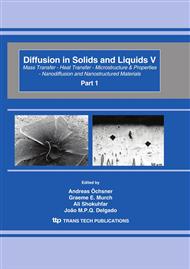p.656
p.664
p.670
p.676
p.682
p.688
p.695
p.702
p.708
An Improved Method for Evaluating the Moisture Diffusivity in a Membrane
Abstract:
A method that combines the experimental measurements and numerical simulations to determine the moisture diffusivity in a membrane has been developed. An experimental set-up was designed and constructed to measure the total moisture resistance. The test section consists of an airflow channel, a membrane, and a water tank, which form a sandwich structure. The process of moisture transport from the water surface to the airstream in the channel is numerically simulated to obtain the variation of the total moisture resistance with the moisture diffusivity in the membrane, which is then determined by comparing the experimental and numerical total moisture resistances. There are three features with the present method, i.e., simple structure of the test section, combination of the experiment and simulation, and consideration of the boundary layer resistances on both sides of the membrane. Tests were conducted on two PVDF membranes with 0.22 and 0.45 μm mean pore diameters. The results show that the moisture diffusivities in both membranes are in the order of 10-6 kgm-1s-1, with a larger pore size tending to yield a larger diffusivity. The moisture diffusivities in both membranes are insensitive to the airflow rate.
Info:
Periodical:
Pages:
682-687
Citation:
Online since:
April 2010
Keywords:
Price:
Сopyright:
© 2010 Trans Tech Publications Ltd. All Rights Reserved
Share:
Citation:


